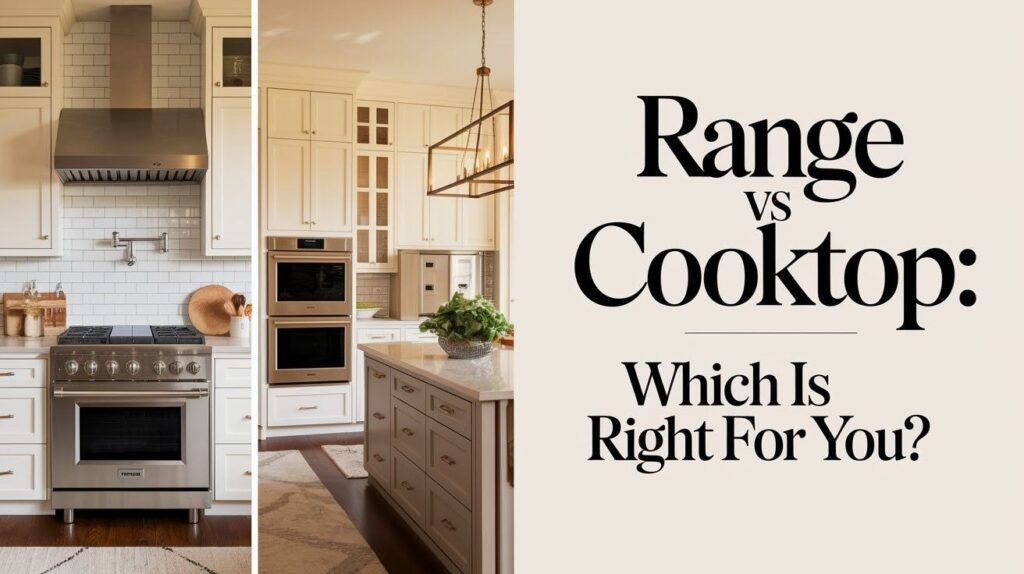Choosing the right cooking appliance can make or break your kitchen experience. Are you standing in your kitchen right now, wondering if that old stove needs replacing?
Maybe you’re planning a renovation and feeling overwhelmed by all the options? You’re not alone.
The decision between a range and a cooktop affects everything from your daily cooking routine to your kitchen’s overall functionality and appearance.
Both options offer distinct advantages, different price points, and varying design possibilities. What works perfectly for your neighbor might not suit your cooking style or space.
Let’s help you figure out which option will transform your kitchen into the cooking space you’ve always wanted.
What Is a Range?
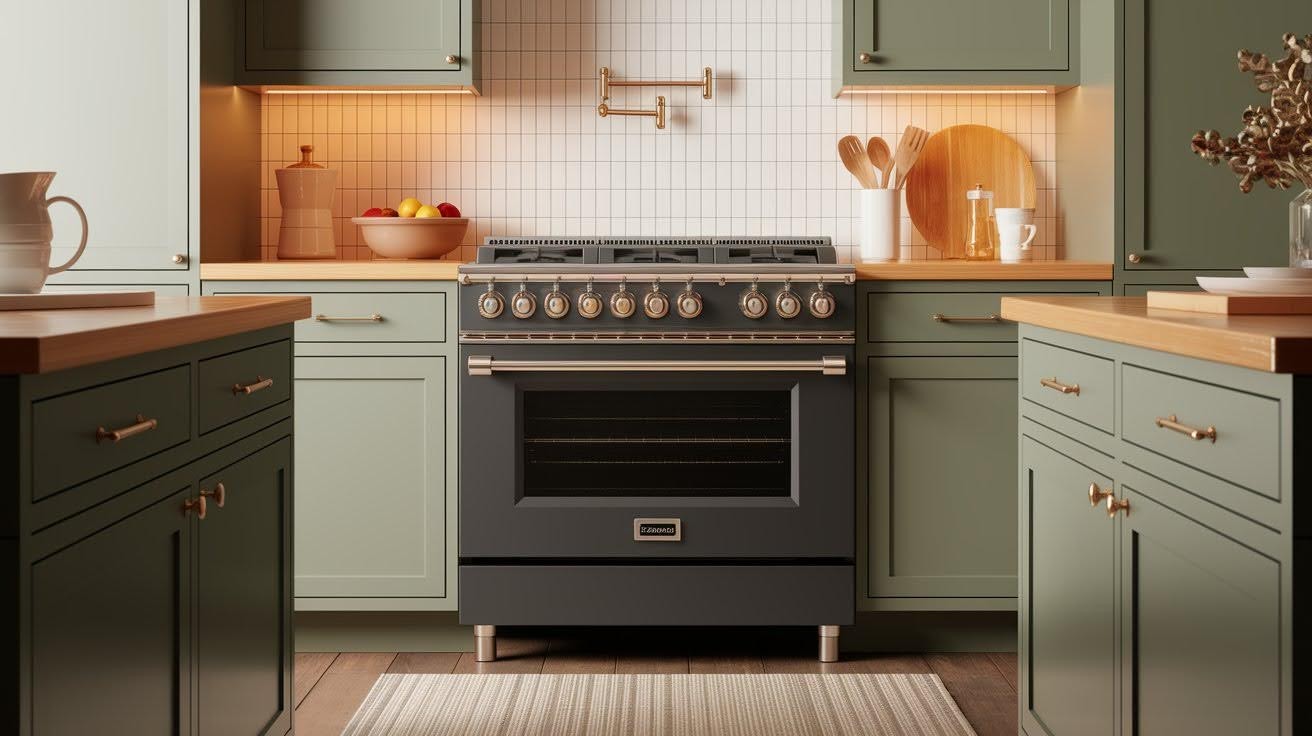
Think of a range as your kitchen’s workhorse. It’s that familiar appliance you probably grew up with. A range combines your stovetop and oven into one complete unit.
You’ll find it standing freely in your kitchen, ready to handle everything from morning pancakes to holiday roasts.
Most homes come equipped with ranges because they’re practical and space-efficient. They fit into a standard spot between your cabinets, making installation straightforward.
You can choose between gas, electric, or dual-fuel models depending on your cooking preferences and home setup.
Gas gives you instant heat control, electric offers consistent temperatures, and dual-fuel combines the best of both worlds.
What Is a Cooktop?
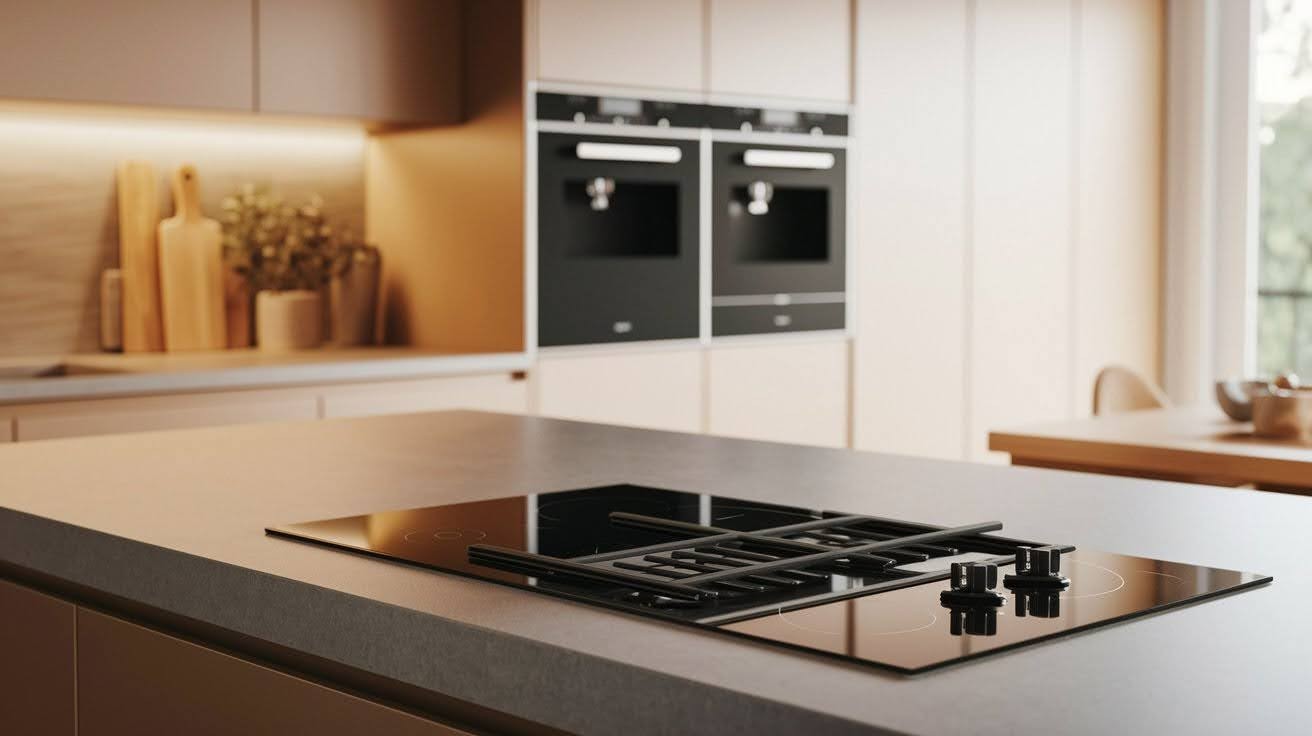
A cooktop takes a different approach to kitchen design. It’s a flat cooking surface that gets built directly into your countertop or kitchen island.
This creates a sleek, integrated look that many homeowners find appealing.
Here’s the important part: cooktops don’t include an oven. You’ll need to install a separate wall oven somewhere else in your kitchen for baking and roasting.
This means planning two different locations for your cooking appliances.
Cooktops come in three main styles. Gas models give you visible flames and instant heat adjustment. Electric versions provide steady, even heating.
Induction cooktops use magnetic technology to heat your pans directly, offering precise temperature control and faster cooking times.
Range vs. Cooktop: Key Differences
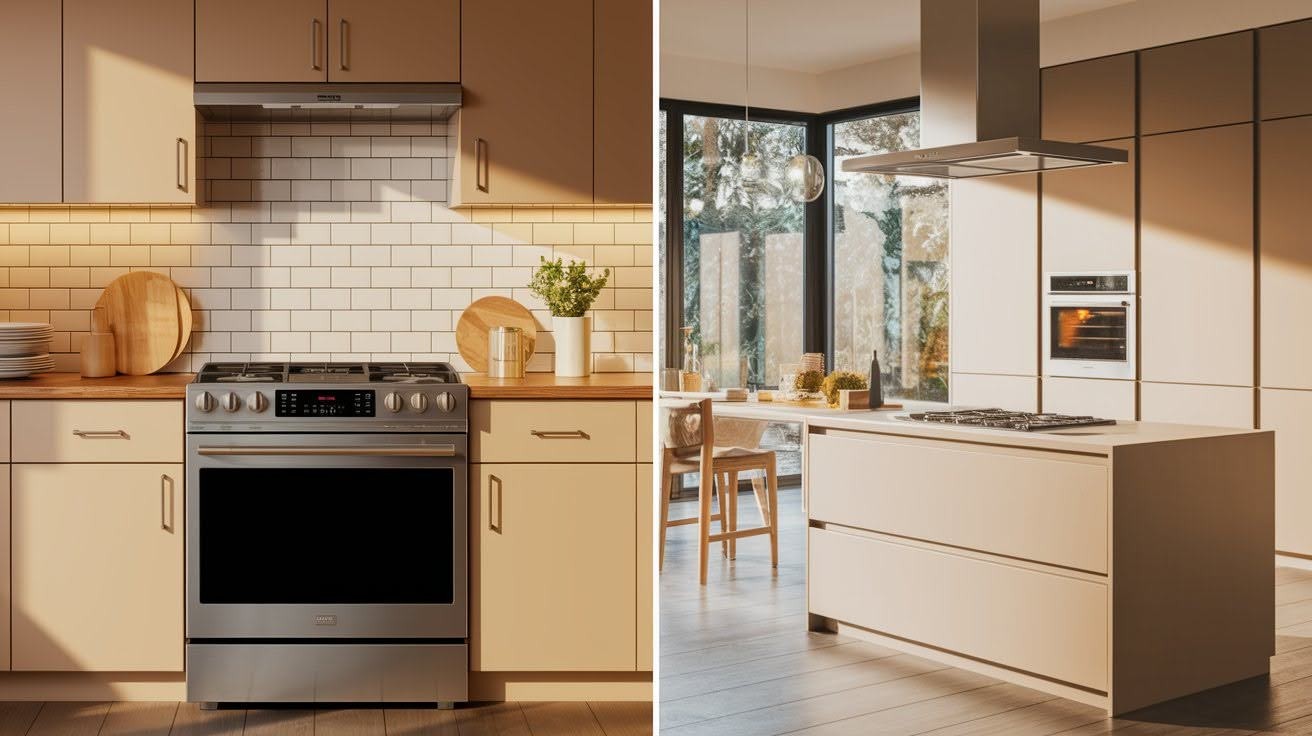
Layout and Installation
Ranges are simple. One unit slides into place between cabinets. Most installations happen quickly without major changes.
Cooktops need more work. They get cut into countertops with separate wall ovens installed elsewhere. This gives you more design options but requires careful planning.
Flexibility and Design
Cooktops create separate work zones. You can cook while someone else bakes without crowding each other.
Ranges keep everything together in one spot. This works great for smaller kitchens or if you like having all cooking functions nearby.
Features and Technology
Cooktops and built-ins often get new technology first. Think Wi-Fi controls and advanced sensors.
Ranges are catching up with air fry modes, convection settings, and dual fuel options.
Pros and Cons
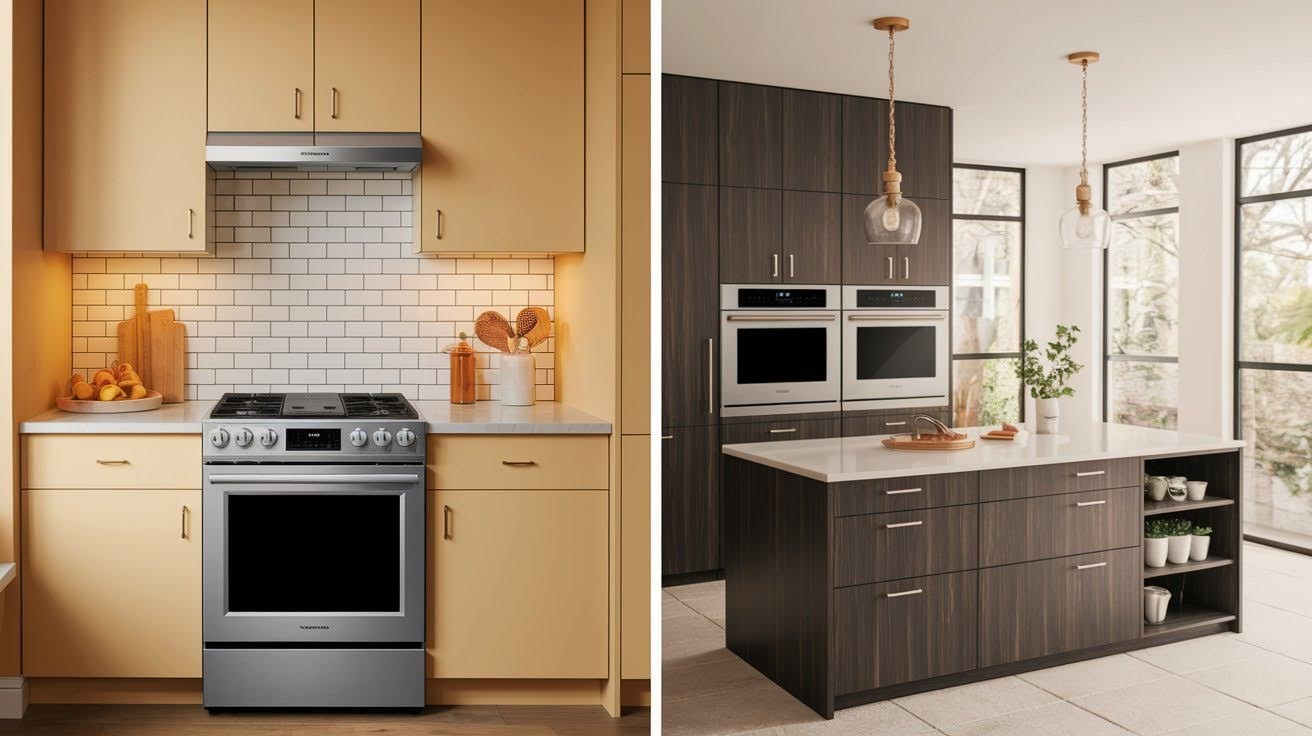
Range Pros
- Saves precious kitchen space by combining everything into one appliance
- Straightforward installation with lower upfront costs
- Perfect for smaller kitchens with limited room
Range Cons
- Requires bending down to use the oven every time
- Two cooks often bump into each other in the same area
- Fixed counter layout with limited flexibility for changes
Cooktop + Wall Oven Pros
- Creates a sleek, built-in appearance that looks professionally designed
- Mix different brands and sizes to get exactly what you want
- Double-wall ovens provide massive cooking capacity
- Customizable counter heights with added storage underneath
Cooktop + Wall Oven Cons
- Higher costs for two separate appliances and installation
- Requires cabinet and countertop modifications during renovation
Energy Efficiency Considerations
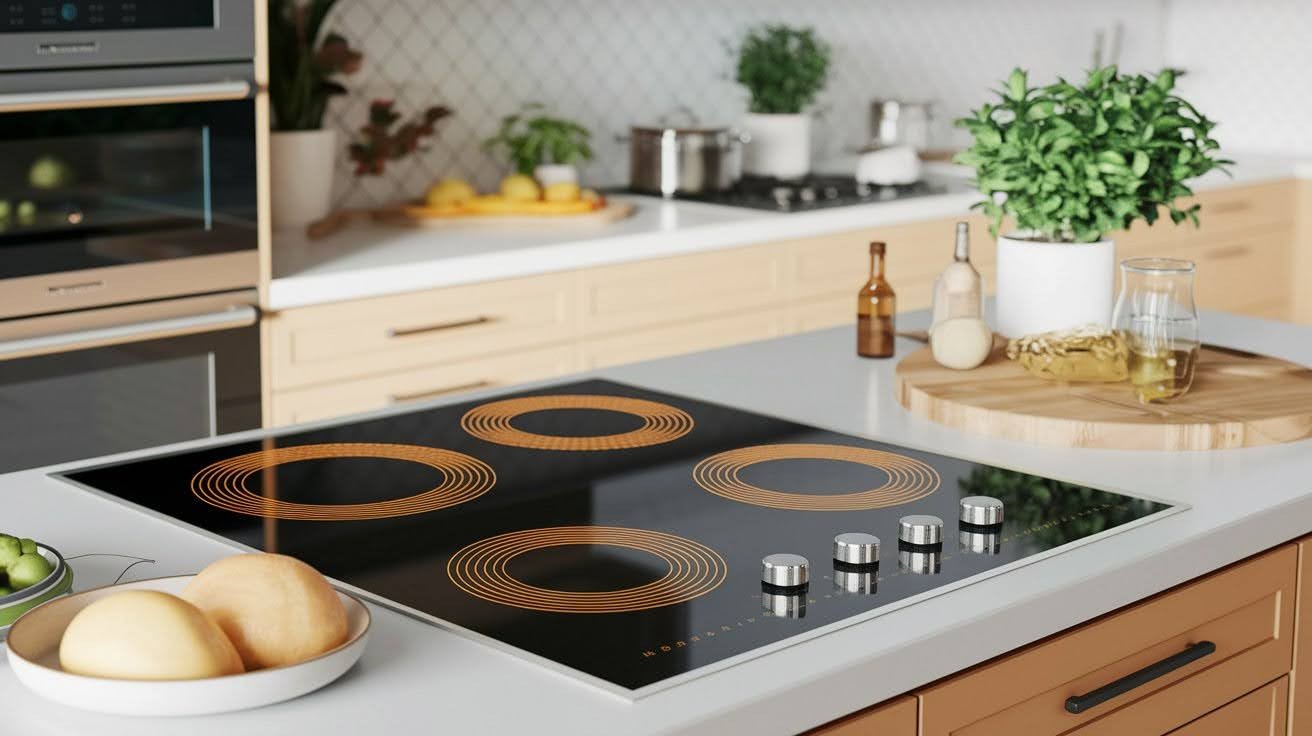
Your monthly energy bills will thank you for choosing efficient appliances. Look for the ENERGY STAR® certification label when shopping for ranges or cooktops. This government backing means the appliance meets strict efficiency standards.
Induction cooktops win the efficiency contest. They heat your pans directly using magnetic technology, wasting less energy than gas flames that heat the air around your cookware.
Wall ovens can sometimes use energy more efficiently than range ovens. This depends on how often you cook and bake.
If you use your oven frequently, a well-insulated wall unit might save you money over time.
Consider your cooking habits when making this choice. Heavy bakers might benefit more from an efficient wall oven, while casual cooks may find an ENERGY STAR® range perfectly adequate.
Choosing the Right Option for Your Kitchen
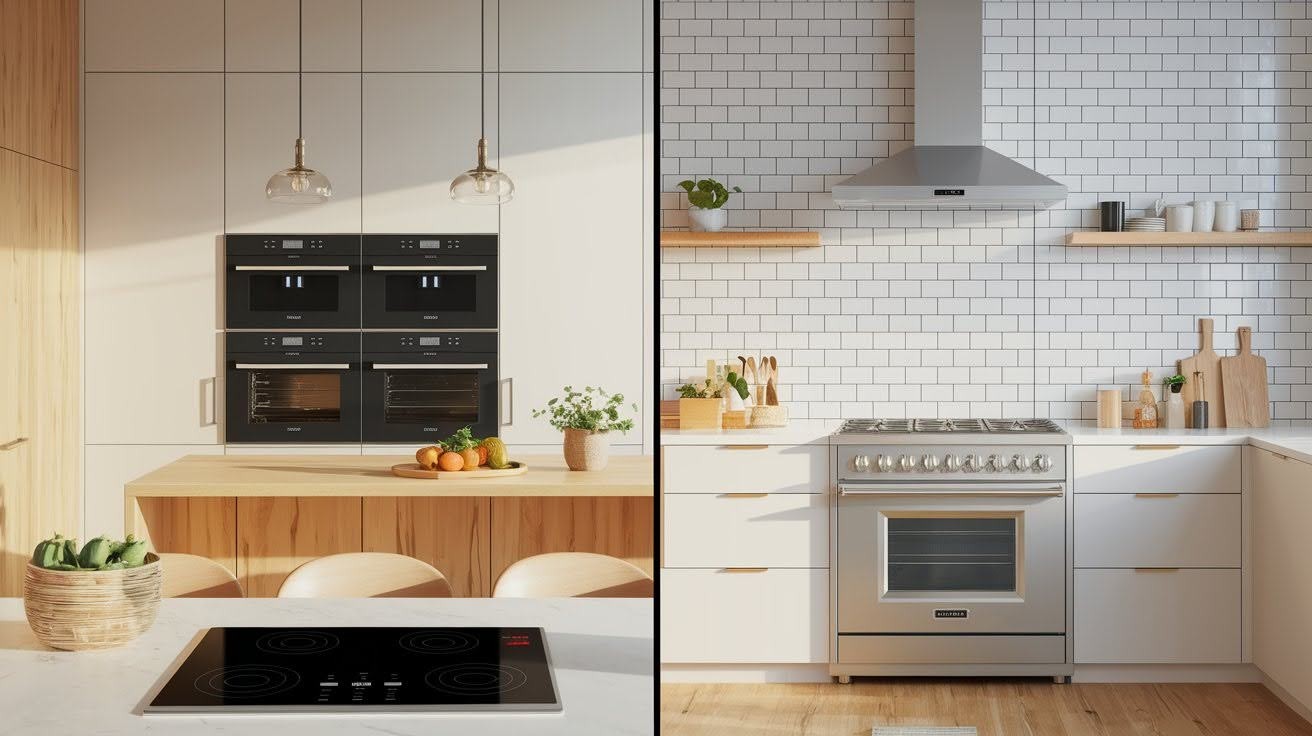
Consider Your Space
Small kitchens work best with a single range. You get full cooking power without sacrificing precious counter space or storage areas.
Large or open kitchens can handle separate cooking zones. A cooktop on your island with a wall oven across the room creates an efficient workflow for busy households.
Think About Cooking Habits
Do you and your partner cook together often? Separate stations prevent kitchen collisions during meal prep. One person can use the cooktop while another handles oven duties.
Love baking bread, cookies, and casseroles? Double-wall ovens let you bake multiple dishes at different temperatures simultaneously.
Budget Factors
Ranges cost less upfront. You buy one appliance, pay for one installation, and start cooking right away.
Cooktop plus wall oven combinations require a bigger initial investment. However, this setup gives you more options and flexibility as your cooking needs change over time.
Style and Aesthetics
Built-in appliances create clean lines and a luxury appearance. Your kitchen looks custom-designed and professionally planned.
Ranges offer a traditional look with proven convenience. They fit into most kitchen designs without requiring major modifications.
Final Thoughts
The choice between a range and a cooktop comes down to your specific situation. Ranges offer simplicity and cost savings, while cooktops provide flexibility and style.
Your kitchen size, cooking habits, and budget should guide this decision.
Don’t rush into buying based on looks alone. Visit appliance showrooms and test different configurations.
Imagine yourself cooking your favorite meals on each setup. Consider how you move around the kitchen and where you store your most-used items.
Remember, this appliance will serve your family for years to come. Take time to make the right choice for your lifestyle.
The perfect cooking setup is the one that makes your daily kitchen routine smoother and more enjoyable. Trust your instincts and choose what feels right for your home.
Frequently Asked Questions
Can I install a cooktop without a wall oven?
Yes, but most homeowners need both for complete cooking functionality. You can install just a cooktop if you rarely bake.
Are ranges cheaper than cooktop and wall oven combinations?
Yes, ranges cost significantly less upfront. You buy one appliance instead of two separate units.
Which option works better for small kitchens?
Ranges work better for small kitchens. They provide full cooking capability without requiring extra space for separate installations.
Do cooktops cook differently from range stovetops?
No, they cook similarly with the same fuel type. The main differences are installation and kitchen layout.
How long do ranges last compared to separate appliances?
Both last 10-15 years typically. Separate appliances might need replacement at different times, while ranges get replaced as complete units.

